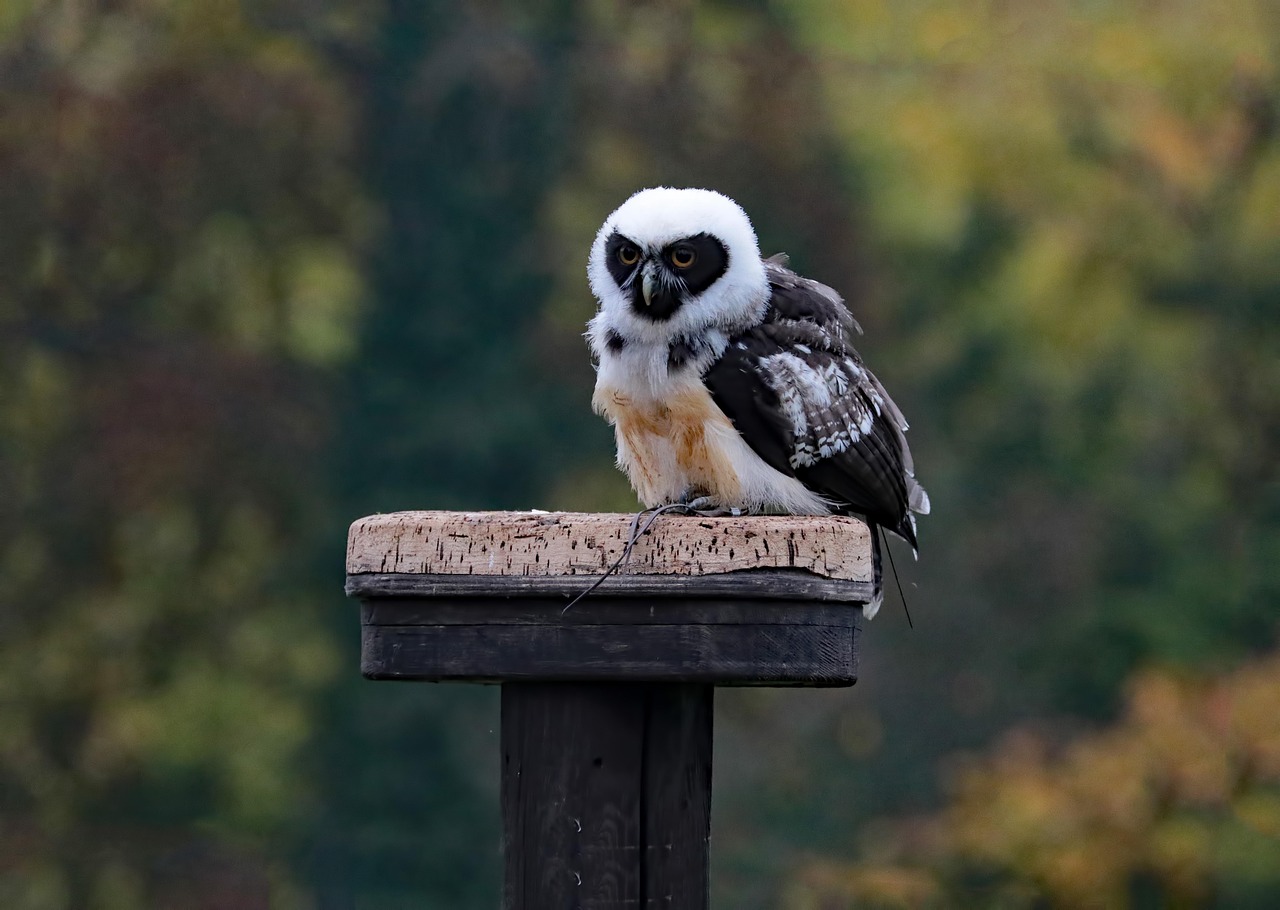When you picture a Spectacled Owl, you probably imagine a large, formidable bird of the neotropical jungles. You picture that deep, dark chocolate-brown body, a white “X” between the eyes, and those piercing yellow “goggle” eyes. It’s a stunning, mysterious-looking predator.
But if you stumbled upon its young, you would be forgiven for thinking you’d discovered an entirely different species.
The young spectacled owl is one of the most dramatic, adorable, and frankly bizarre-looking babies in the bird world. Their transformation from fluffball to feathered hunter is a slow, strange, and fascinating process.
Here are the top facts you didn’t know about the young spectacled owl.
1. They Look Absolutely Nothing Like Their Parents
This is the most shocking fact. Young spectacled owlets are not just a smaller, cuter version of the adults. They are almost the complete opposite.
The owlets are covered in a thick, woolly coat of creamy white down. Where the adult is dark and sleek, the baby is fluffy and bright. The only family resemblance is the “spectacles,” but even these are reversed.
2. They Wear a “Reverse” Mask
While the dark-bodied adult has white markings around its eyes and on its “throat,” the white-bodied owlet has a jet-black facial mask. This gives them a comically startled or bandit-like appearance. This stark black-on-white look is so different from the adult’s markings that it’s one of nature’s most dramatic “before-and-afters.”
3. They Are “Branchers” Before They Are Fliers
Like many owl species, young spectacled owls are “altricial,” meaning they are born blind and helpless. But even before they can properly fly, they get restless.
These owlets will leave the nest (often a high tree cavity or stick platform) and begin exploring. They are called “branchers” because they use their beaks and talons to climb, clamber, and hop from branch to branch in their nest tree. It’s an awkward but effective way to build strength and see the world.
4. They Have an “Awkward Teen Phase” That Lasts for Years
If you thought a human teenager’s awkward phase was bad, it has nothing on the spectacled owl. The transition from white fluff to dark adult plumage is incredibly slow.
It’s not one clean molt. The dark feathers grow in patchy, irregular blotches all over the owlet’s white body. This mottled, “salt-and-pepper” phase can last for a very long time. In fact, it can take up to five years for a spectacled owl to fully molt into its complete, sleek adult plumage.
5. They Are the Ultimate “Stay-at-Home” Kids
Raising a large predator is a lot of work. The parents must bring a steady supply of food (rodents, bats, birds) to their demanding young. This is a full-time job.
Because of this long development and the time it takes to learn to hunt, young spectacled owls are completely dependent on their parents for an exceptionally long time. They will often stay in their parents’ territory, being fed and protected, for at least one full year after hatching.
6. They “Hiss” and “Scream,” They Don’t Hoot
Don’t expect to hear a soft, gentle “hoo-hoo” from a young spectacled owl. When these owlets are begging for food, they produce a range of startling, non-owl-like sounds. Their main call is a loud, raspy, descending “hiss” or “scream” that sounds more like a piece of ripping fabric or a steam kettle.
A True Jungle Transformation
The young spectacled owl is a perfect example of nature’s magic. It’s a reminder that even the most formidable hunters start as helpless, goofy-looking fluffballs and that the journey to adulthood is a long and amazing transformation.
What’s your favorite fact about the young spectacled owl? Share it in the comments below!

